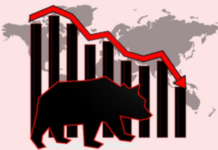New Delhi– India’s annual wholesale price index (WPI) accelerated into the positive terrain after staying in negative zone for 17 straight months, official data showed on Monday. India Inc expressed mixed reactions to the numbers.
The annual WPI moved up to 0.34 percent for April, from (-)0.85 percent in March and (-)2.43 percent during the corresponding month of the previous year.
The upward movement mainly occurred on the back of a rise in the prices of pulses, potatoes, sugar, edible oils, egg, meat, fish and milk.
The data furnished by the commerce ministry showed that among the three major sub-indices of the WPI, the inflation rate for the index of primary articles, and fuels and power in April increased by 2.1 percent and 1.7 percent, respectively, on a month-to-month basis.
Similarly, the index for manufactured products, which has the highest weightage in the WPI rose by 0.8 percent month-on-month.
On a year-on-year basis, the April data disclosed that prices of primary articles rose 2.34 percent, whereas the manufactured product edged up by 0.71 percent.
Food articles inflation jumped to 4.23 percent due to higher prices of tea, pulses, poultry and fruits and vegetables.
During the month under review, some commodities of mass consumption continued to upset household budgets, notable among them being pulses, whose prices were higher by as much as 36 percent over the like month of the previous year. Potatoes were dearer by 35.45 percent.
Other food items such as wheat and vegetables recorded modest price increases. Wheat was dearer by 2.22 percent, and vegetables by 2.21 percent.
Even under the manufactured products category, prices of commodities pertaining to processed food rose — especially sugar that was higher by 16.07 percent, followed by food products which were up by 8.01 percent.
The edible oil prices increased by 5.61 percent.
Notwithstanding the upward price trend, fuels prices fell. The fuel and power index was down 4.83 percent — petrol was cheaper by 4.18 percent and diesel by 3.94 percent. Cost of cooking gas fell by 18.4 percent.
In addition, the ministry revised the rate of the headline inflation for February. The WPI inflation was revised higher to (-) 0.85 percent from (-)0.91 percent which was reported on March 14 this year.
The rise in WPI comes after the Consumer Price Index (CPI) for April showed an upward movement in annual retail inflation, which rose to 5.39 percent from 4.83 percent in March.
The rise in both the inflation indices, coupled with a forecast of a slight delay in the arrival of monsoon has reduced the chances of the Reserve Bank of India (RBI) further easing its key lending rates during the monetary policy review scheduled in June.
India Inc expressed mixed reactions to the latest inflation data.
“While some price pressure is noted in case of select food items, we don’t foresee any significant change in the near term in the inflation trajectory,” industry chamber FICCI’s president Harshavardhan Neotia said in a statement here.
“While the latest monsoon forecast shows a delay by about a week, we hope that the meteorological department’s overall prediction will hold and would provide reprieve in the months ahead,” he added.
Industry body Assocham said upward movement in “WPI was likely due to the commitment shown by the Centre to support industry together with the recent RBI policy stance to reduce interest rates to kick start investment and credit cycle”.
“Price of products of national interest including pulses, food articles, cereals, and wheat have been continuously rising, the policymakers should check and address this through supply side responses,” said Associated Chambers of Commerce and Industry of India (Assocham) president Sunil Kanoria.
“The April 2016 WPI figures may give some relief to manufacturers and producers which was limiting their potential to increase their pricing power and profitability,” he added.
Fitch group company India Ratings and Research said: “Clearly, a rate cut in RBI’s June policy review is ruled out. Although Ind-Ra still expects at least one more rate cut this fiscal but it will be contingent upon the monsoon and how it plays out.
“So far as positive manufacturing inflation in April is concerned it is still early to believe that this is indicative of the return of pricing power of manufacturing sector. We may of wait for a trend to emerge on this account.” (IANS)






